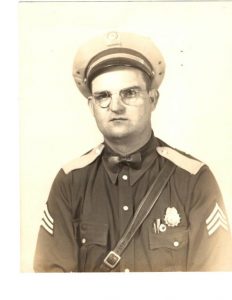The Sabine Neches area of Southeast Texas constitutes one of the largest concentrations of petroleum refining and petro-chemical industries in the United States of America. By the mid 1940’s, these industrial plants were rapidly becoming enclosed by residential areas. With an increase in population came an increase in the consequences of a disaster. However, these industries were their livelihood and the communities sought to co-exist with them.
Several months prior to the 1947 Texas City catastrophe, the plant protection personnel of the many industrial units in the Sabine-Neches area began to study the feasibility of a cooperative assistance effort in the occurence of an industrial disaster within the area. Four major factors were taken into consideration:
- A common interest in protecting the community from a major conflagration and the creation of an efficient organization to do so
- The types of industrial facilities and hazardous materials present in the area.
- Defining the geographical problems relating to exposure and evacuation.
- An accounting of the facilities available and the responsibility of such facilities in an emergency.
A survey of the area confirmed two things already known by the management of these facilities:
- Nearly every type of hazard connected with the manufacturing of petro-chemical products was present.
- Numerous loading docks handled explosive materials twenty-four hour a day, tank farms stored highly flammable crude and refined petro products and a dense network of underground pipe lines carrying fuel gases ran the area.
It was apparent to the management of these refineries that in the absence of a preplanned method of mutual assistance, a large fire, explosion or a natural disaster such as a hurricane or flood, could create an emergency of immense proportion. In addition, a major disaster would subject all evacuation routes to traffic loads far beyond their capacity unless firm controls were in effect.
All major plants and communities within the Beaumont, Orange and Port Arthur area are equipped with modern fire fighting and emergency equipment linked by radio communications. Well trained firefighting crews represent each entity and local law enforcement agencies stand ready to cooperate. The task remained to turn these individual groups into one cohesive “Unit Disaster Preparedness Team” that would be ready to act at any time.. in unison.
The Texas City disaster gave impetus to the founding of the Sabine-Neches Chiefs Association. Many area fire and emergency personnel had seen this destruction first-hand. They moved quickly to convince city, county and industrial officials of the immediate need for an organized disaster plan to prevent the massive loss of life and property that had occurred at Texas City.
On February 9, 1949, a group of representatives from local fire departments and industry met for the purpose of organizing a mutual aid organization. At this first meeting, the Sabine Neches Chiefs Association was formed. In the beginning, one of the largest obstacles facing this group was forming a plan which would not only meet the needs of the community, but would also satisfy the interest of all parties involved. As a direct result of this commitment and willingness on the part of each of the 100-plus members that made up the Sabine Neches Chiefs Association, a mutual aid plan was unanimously endorsed. The emergency assistance plan formed 50 years ago is continually updated to meet the changing times and the Association maintains a constant state of preparedness.

The emergency assistance plan provides the community or member plant in need of assistance with equipment, manpower, area mobilization and communications. The assistance is provided only upon request and at no time does the Association seek to take control of the emergency of the principal entity. Each member serves as liaison to their respective organizations and knows in advance what duties and responsibilities are expected from him in an emergency, regardless of where it originates. Personnel and equipment are placed at the complete disposal of the member who initiates the call until such time that the situation is brought under control or members withdraw by their own authority due to an emergency in their own area.
